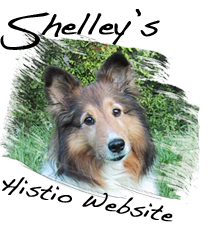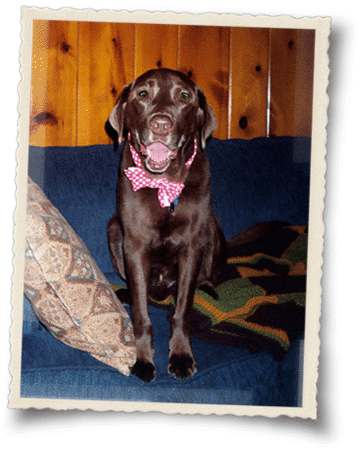
HOME
 YOUR HISTIO STORY
YOUR HISTIO STORY
I am looking for similarities
in all individual cases of
Histiocytic diseases.
I wonder if we all tell our
stories we might come up
with some commonality
between the specific
situations in which all of
our pets got this disease.
So please email me the
details and I'll put your
pets story on Shelley's
Histio Website
 UW HISTIO VERHAAL
UW HISTIO VERHAAL
Ik ben op zoek naar
overeenkomsten in alle
individuele gevallen van
Histiocytose.
Ik hoop dat wanneer wij
onze Histio verhalen
vertellen, wij overeen-
komsten ontdekken over
de manier waarop onze
huisdieren deze ziekte
hebben opgelopen.
Stuur mij de details en
ik zal het verhaal van uw
huisdier op de Histio
website van Shelley zetten.
 WARNING !
WARNING !
These stories are all
different. Individual
symptoms, situations
and circumstances
may vary and response to
therapy is not always the
same.
- Disclaimer -
 WAARSCHUWING !
WAARSCHUWING !
Deze verhalen zijn allemaal
verschillend. Individuele
symptomen, situaties en
omstandigheden kunnen
verschillen en de reactie
op therapie is niet altijd
hetzelfde.
- Disclaimer -
HISTIOCYTOSIS IN
OTHER LANGUAGES
German - Hund
Maligner Histiozytose
French - Chien
l'Histiocytose Maligne
Italian - Canis
Maligni Histiocytosis
Spanish - Perros
Histiocitosis Maligna
Dutch - Hond
Maligne Histiocytose
HOME
Quimby
Systemic Histiocytosis
Chocolate Labrador / Chesapeake Bay Retriever mix
Male
January 1, 1995 - May 3, 2005


About a month ago, our vet diagnosed our Quimby, the love of our lives, with systemic histiocytosis. Four days later, he died. I went to your website when researching the disease. It was so much easier to bear when we had seen that others went through the same experience. I decided I'd like to share our story with others.
In May of 2004, after purchasing our first home, my husband Mike and I went to our local SPCA and decided to consider getting our first dog as a rescue. As we walked through the kennel, we saw tons of dogs, but it wasn't until we noticed that there was one kennel that wasn't getting any visitors. We decided to check it out. Inside was the happiest dog I had ever seen. We looked at the chart on the wall next to his kennel and we immediately understood why he was being so neglected. He was 9 1/2 years old. His owner passed away and the family gave him up. When I leaned in to get a better look at this chocolate lab / Chesapeake Bay retriever mix, he licked me ferociously on the face. We took him home a half hour later.
The people at the SPCA told us that he wasn't responding to his name, and the vet we chose recommended that we try renaming him. It would be awkward at first, but we might just get a break through. We named him Quimby and made him a member of the family. He was the best dog I have ever come in contact with. He slept with us on the bed (he was 70 pounds), loved his couch, loved every dog he came in contact with, loved walks and licking EVERYBODY, and loved life. Even after he suffered a bout of bloat (which we treated with surgery) he was still working like a puppy. We took him to the park, to the beach, on car trips, everywhere. He was our best friend.
This April, we took him to the vet for his annual visit and noticed that he had some sores in his ear and his eyes. At first, he was diagnosed with allergies and we had a few medications to help him out. A week later, the sores had spread to his groin and his skin. A week after that, the histiocytes (as we now know they were) were in his liver, lungs, and spleen. He had lost the ability to control his bladder and was also leaking blood. Four days after that, his mouth was paralyzed and he couldn't eat or drink. When the official diagnosis came in, we knew there was no chance for improvement, but the vet offered a feeding tube until the disease finally took him. We couldn't do that to our Quimby.
Quimby loved walks, eating his food, and chasing bunny rabbits. We couldn't let him spend the rest of his days on the floor with a feeding tube. We took him in the back yard and let him lie in his favorite mulch pile. Then, we brought him to see his friends at the vet. When we got there, we laid on the floor with him, told him that we loved him, and held him, letting him know he could go to sleep now, until he finally passed away. It was the hardest thing we had ever had to do, but he went with dignity with us at his side.
Hopefully, the future will provide more about this disease so that it can be cured all together. Until then, we wanted to share our story about a dog that will never be forgotten.
Julie and Michael Bastedo

